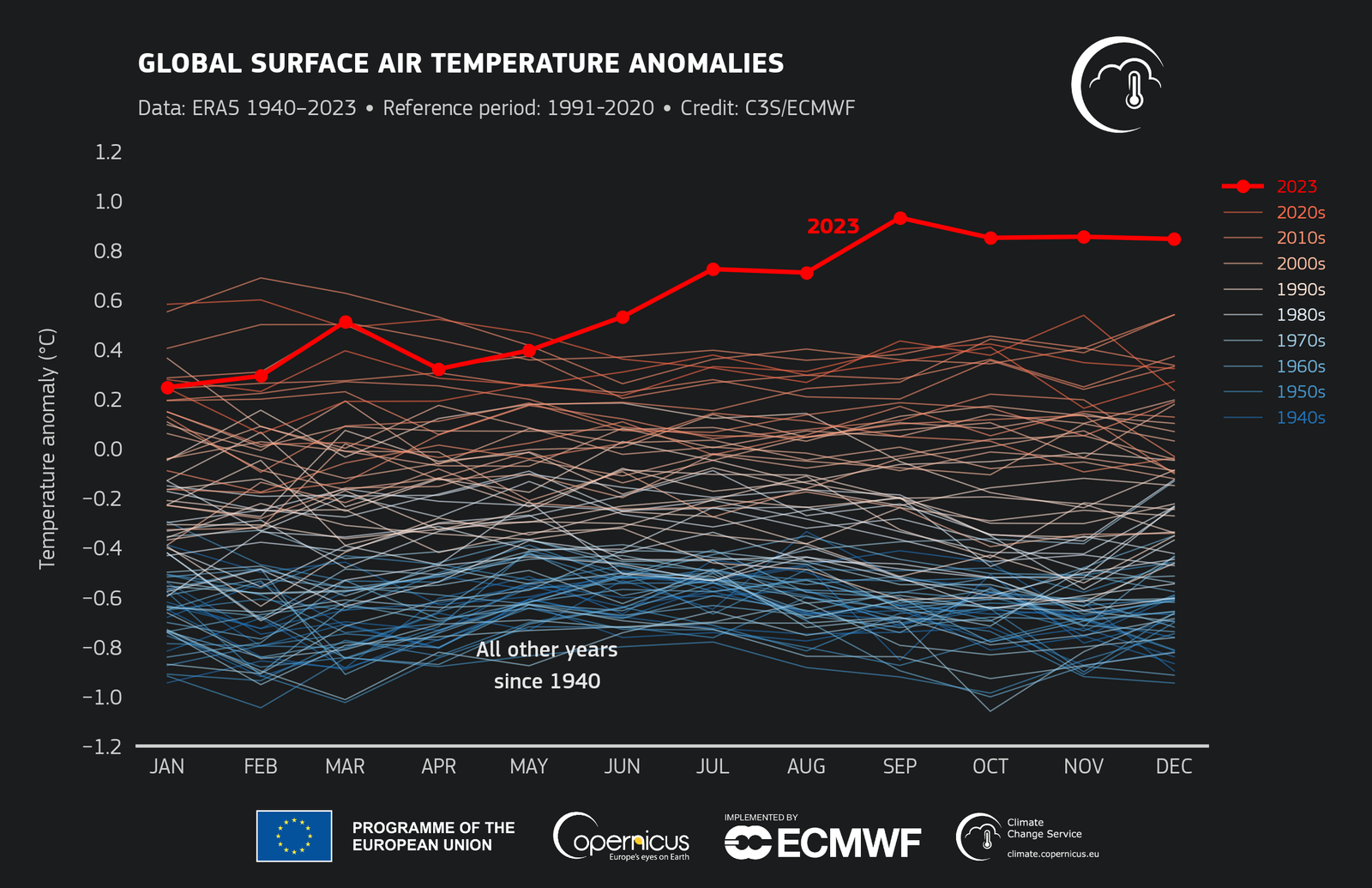The year-to-year increase in global-average temperature was exceptionally large from 2022 to 2023.
climate.copernicus.edu
Read directly from the source, report and summary available at:

Global Climate Highlights 2023
This section looks at the global Climate Indicators for which data are available for all or part of 2023. For more details on each, visit the respective Climate Indicator page. The page will be updated in stages, as data become available.
Key Messages
- 2023 is confirmed as the warmest calendar year in global temperature data records going back to 1850
- 2023 had a global-average temperature of 14.98°C, 0.17°C higher than the previous highest annual value in 2016
- 2023 was 0.60°C warmer than the 1991-2020 average and 1.48°C warmer than the 1850-1900 pre-industrial level
- It is likely that a 12-month period ending in January or February 2024 will exceed 1.5°C above the pre-industrial level
- Each month from June to December in 2023 was warmer than the corresponding month in any previous year
- July and August 2023 were the warmest two months on record. Boreal summer (June-August) was also the warmest season on record
- In September 2023, the temperature deviation above the 1991–2020 average was larger than in any month in any year in the ERA5 dataset (0.93°C higher than the 1991-2020 average)
- October, November and December 2023, each with a temperature of 0.85°C above average, ranked all joint second-largest in terms of temperature deviation above the 1991–2020 average
Was the unusual warmth of 2023 expected?
Yes and no. Yes, in the sense that a year as warm as 2023 was seen as being inevitable in due course due to a combination of continued climate warming and an occurrence of El Niño.
See summary coverage from over 200 news sources in the Ground.News Roundup:

EU climate report shows 2023 is the hottest year on record
2023 “smashed” the record for the hottest year by a huge margin, providing “dramatic testimony” of how much warmer and more dangerous today’s climate is from the cooler one in which human civilisation developed.




